Columbia River
-
- Inland Waterways Report: Columbia-Snake River System Marine News, Sep 2022 #32
It’s amazing to consider that a commercial vessel in the Pacific Ocean, approaching the mouth of the Columbia River, can continue its eastward journey to finally tie up at the Port of Lewiston, in Lewiston, Idaho, America’s most inland West Coast port, 465 miles from the Pacific Ocean.
The Columbia and Snake Rivers form that critical east-west waterway, an economic powerhouse regionally, nationally and internationally. According to the Pacific Northwest Waterways Association (PNWA), the Columbia-Snake River System (CSRS) is the nation’s single largest wheat export gateway, second largest for soy and corn exports and in the top ranks for wood products, autos, bulk minerals and a growing market for inland river cruises. Eight dams – four on the Snake River – create and maintain waterway performance – importantly, not just for commercial navigation but for energy, flood control and recreation. Petroleum is a top commodity moved upriver.
Now, this national asset is under critical scrutiny; it could be scrapped. There are a number of concerns but topmost, particularly along the Snake River, is the survival, the sustainability, of northwest salmon and the impact of dams on their storied lifecycle of river to ocean and their return upriver to spawn. There are suggestions now to breach the four Snake River dams. Otherwise, supporters charge, Snake River salmon face extinction.
Obviously, such a drastic move does not proceed casually. Columbia-Snake River waterways operators are right in the middle of these swirling currents, trying to keep one eye on immediate business demands and one eye on a hazy future. If the dams are breached, the Snake River is no longer commercially navigable.
National-Federal issues and initiatives
Briefly, there are three very high-profile Snake River initiatives:From the White House: On July 12 Administration officials released two studies, one focusing on salmon recovery, the other on electric power replacement if hydro generation were lost. “Business as usual will not restore the health and abundance of Pacific Northwest salmon. We need a durable, inclusive, and regionally-crafted long-term strategy for the management of the Columbia River Basin,” said Brenda Mallory, who chairs the WH Council on Environmental Quality.
In June, U.S. Sen. Patty Murray and Washington Gov. Jay Inslee released a draft report to inform upcoming recommendations from their Joint Federal-State Process regarding the Lower Snake dams and salmon recovery.
In February 2021, Idaho Congressman Mike Simpson unveiled the “Columbia River Basin Initiative,” a $33 billion plan to at least start on compensatory costs if the dams were breached and the costs to build alternatives for lost assets, including power and transportation, i.e., new highways and rails.
In August, ACE’s Inland Waterways Users Board met in Walla Walla. Northwest issues were on the agenda – deliberately so, commented Chairman W. Spencer Murphy, with Canal Barge Company. Murphy introduced Robert Rich, VP Marine Services, with Shaver Transportation, based in Portland, Ore. Rich is a member of the Users Board.
Rich provided the balance of comments, presenting regional concerns about the increasing political intensity on dam breaching but without a full presentation of impacts – to waterways operators, farmers and agricultural businesses, regional energy operations and markets, multi-modal shippers and, really, food security for millions, worldwide, who depend on a very dependable system.
Rich posed a rhetorical question to Board members: If we were starting with a clean slate in 2022 what would be prioritized? His answers: green transportation – waterways. Clean, low-carbon energy – hydro. Irrigation and flood control. Multimodal – barges, trains and trucks each contributing best value across the supply chain. Accessible recreation. All at a scale that expands from singular farms to eventually encompass national and international markets and consumers.
It’s the dams that make this possible, Rich reminded the Board. “This is working now – in 2022,” he emphasized.
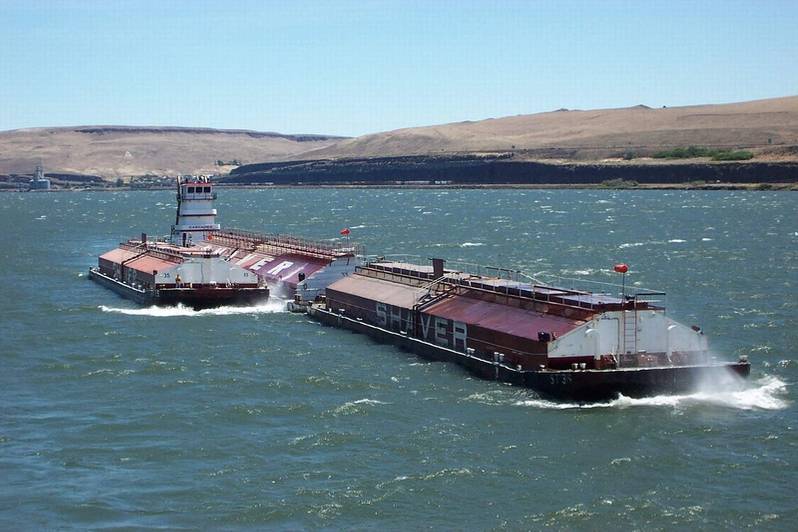 (Photo: Shaver Transportation)
(Photo: Shaver Transportation)Business perspectives
Heather Stebbings is Executive Director of the Pacific Northwest Waterways Association. The PNWA, established in 1934, with 150 members, is a collaboration of ports, businesses and public agencies.Stebbings and her team are closely watching the dam issues. Major concerns include:
That White House documents are tilted in favor of established interests, including the Nez Perce and State of Oregon, who have long supported dam removal.
Giving too much weight to the notion that salmon mortality in the ocean results from hydro system impacts. “This is unproven,” Stebbings says, citing research showing that salmon returns are similar in dammed and undammed rivers. She notes research that the Pacific itself is the largest driver of salmonid mortality, not the dams. She said that the four Lower Snake River dams “provide greater than 97% successful fish passage for juvenile salmon making their way to the ocean and have had improved salmon runs over the last three years.”
Dam breaching poses significant, and negative, energy-environmental impacts. PNWA calculates it would take 162,153 semis or 42,160 rail cars to move the 4.2 million tons of cargo currently barged on the SR. “That means an increase in CO2 and other harmful emissions by over 1,251,000 tons per year – the same as opening a new coal plant every six years,” Stebbings writes.
Finally, there’s energy: hydropower provides the baseload function necessary to integrate intermittent solar and wind into regional transmission and distribution systems. If lost, there’s no system, no grid.
Peter Schrappen, CAE, is VP for The American Waterways Operators Pacific Region, based in Seattle. AWO is zeroed-in on these various proposals. In response to the Murray/Inslee report Schrappen wrote the following:
The loss of the Snake River dams would “devastate regional and national food security, the supply chain, and clean energy generation.”
Schrappen challenged the report’s claim that dams’ significant benefits could be replaced or mitigated.
Northwest rail and truck capacity are challenged to meet current demands. “It is unrealistic to believe that these two modes can absorb the additional 4 million tons of cargo moved through the Snake River locks each year.”
Regional and day-to-day challenges
In addition to these looming mega-issues, Columbia-Snake River operators face the “regular” array of day-to-day challenges.“The labor shortage is an ongoing concern and top priority for our members,” Peter Schrappen commented, citing both recruitment and retention. Demand for river transport is increasing. New people are needed – not just replacements.
Supply chain issues continue. Schrappen said engine components and maritime paints are hard to get, as are buoys and navigational aids. These west coast challenges could drive traffic to east coast ports.
Regarding infrastructure, Schrappen highlighted the following:
Planned dredging for the Columbia and Snake main and side channels and turning basins. “This is welcome news,” Schrappen commented.
The Columbia River bridge project is key and deck height for vessel clearance is a critical decision. Schrappen is pleased that the CG seeks a height of 178 feet.
Also positive is $146 million in system maintenance funding from the recent Infrastructure act.
PNWA’s Heather Stebbings cited regulatory challenges, particularly with timely permitting, as a top issue. She said that despite statutory, 135-day deadlines for inter-agency consultations, Northwest port projects “routinely wait one to three years for permits and some even longer.”
Stebbings said that recent NOAA programmatic changes with maintenance projects has led to a backlog – over 100 projects – in the Puget Sound region. NOAA expects it will take two years to work through that backlog, Stebbings said, calling it a very problematic delay for ports whose permits have been “on hold for up to four years.”
Stebbings predicts these Puget Sound tie-ups present national implications because, she explains, the Army Corps has adopted NOAA’s mitigation cost and maintenance policies which the Corps will apply nationwide. Right now, she says it is “unclear how the agencies will develop tools to apply this policy and if they will implement moratoriums in other regions during the development process.”
In an interview separate from his Board comments, Rob Rich, with Shaver, said high fuel prices are impacting northwest operators. He said fuel prices have nearly tripled since 2020. And the focus on decarbonizing transportation is particularly challenging, Tugs are an investment that can have a 50-year lifespan; running out of fuel is not an option. There are parallel concerns. Rich cited a Portland City Council policy to limit, and eventually shutter, petroleum storage facilities (Council will vote in August, but prior to deadline for this report).
Importantly, Rich noted that business “is good on our system right now.” The grain crop is big, and so is demand, particularly from Pacific Rim countries while world-wide supply has been constricted by the Ukraine-Russian war. Shippers are moving a lot of wood and wood products, concrete and petroleum.
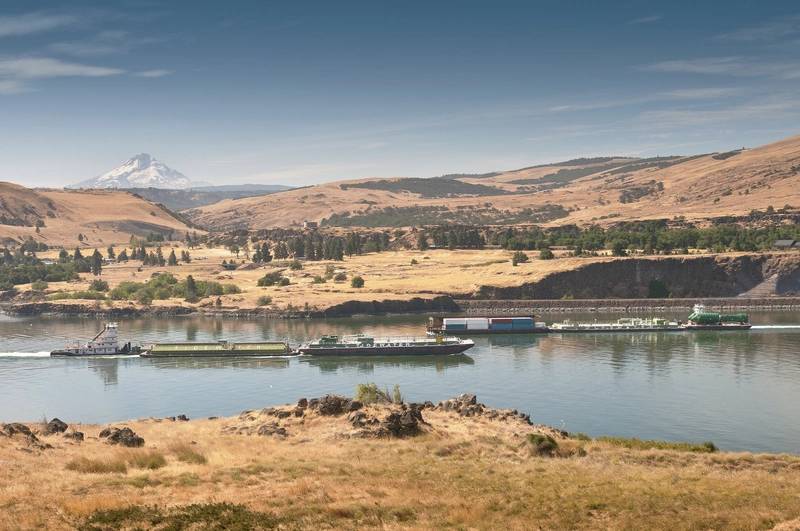 (Photo: Tidewater Transportation and Terminals)
(Photo: Tidewater Transportation and Terminals)Looking ahead
Schrappen expects new opportunities from offshore wind. He said AWO members “are investing and preparing to play an important role in this new market.” He added, though, that safe fairways for vessel traffic have to remain a top priority. And, on the west coast, new aquaculture areas are under development, presenting additional territorial constrictions for commercial traffic and operations.Alt-energy business possibilities go beyond wind. Tidewater Transportation and Terminals, based in Vancouver, Wash., for example, has its eye on a new low carbon fuel standard adopted in Washington, effective in 2023.
Jennifer Riddle is Tidewater’s corporate communications and marketing manager. She said this will establish a green corridor from California through British Columbia. “We see this as an opportunity to increase movements of various alternative and renewable fuels as the program gains traction,” Riddle said. She explained further that Tidewater owns and operates a biodiesel blending facility at its Umatilla Terminal in Oregon. Now, the company is contemplating additional investments at terminals in Pasco and Vancouver, Washington, sites which already provide transportation, storage, pipeline, and multi-modal transfer services.
For Tidewater, though, and all other operators, the mega-decisions hanging over the whole northwest system weigh heavily. Riddle cited the “reliability” of the C-SR locks and dams, a critical aspect allowing Tidewater to work 24/7, 365. “This robust and vital river highway,” Riddle emphasized, “is one of the most efficient networks for moving commodities in the nation.”
If the four Snake River dams are breached, the world may not end, but it will be a far different world – for everybody.
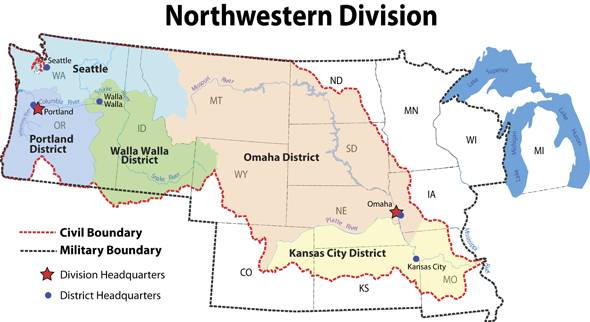
Army Corps of Engineers (ACE) District: Walla Walla, Wash.
Established: 1948. Boundaries generally match the watershed boundary of the Snake River drainage and include approximately 107,000 square miles in six states: Washington, Oregon, Idaho, Wyoming and small parts of Nevada and Utah.
Dams: Dworshak – North Fork Clearwater River, Ahsahka, Idaho
Mill Creek – part of a flood management project, Walla Walla, Wash.
McNary – Columbia River, Plymouth, Wash.
Ice Harbor – Snake River, Franklin and Walla Walla Counties, Wash.
Lower Monumental – Snake River, Franklin and Walla Walla Counties, Wash.
Little Goose – Snake River, Columbia and Whitman Counties, Wash.
Lower Granite – Snake River, Garfield and Whitman Counties, Wash.
Lucky Peak – Boise River, Boise, Idaho
Energy: The District is the second largest hydropower producer among ACE districts (Portland District is first), providing a total generating capacity of 4,413 megawatts to the Federal Columbia River Power System. McNary Lock and Dam can produce 980 megawatts from 14-hydropower turbines. One hydropower turbine at McNary produces as much electricity as 211 Walla Walla FPL 660 KW wind turbines.
Salmon: A juvenile fish transportation program, begun in 1968, uses specially equipped barges and tank trucks to carry migrating salmon and steelhead fingerlings around Snake and Columbia River dams. Construction on fish hatcheries started in 1976.
Navigation: The Columbia-Snake Rivers system allows commercial maritime transport from Portland, Ore. to Lewiston, Idaho – four-hundred miles inland. US agriculture (particularly wheat) is the critical export at international scale. Petroleum products are the most important upstream cargo. -
- Cummins-Powered Construction Pushboat Delivered By Keith A. Record Maritime Reporter, Sep 1985 #8
The 42-foot, 50-ton pushboat Walter D. Johnson, newly built by Keith A. Record of Portland, Ore., is undertaking a demanding job on the Columbia River—that of spotting bridge construction barges in tight quarters and rapid river currents. For this tough assignment, vessel owner Johnson Bros
-
- ASNE/SNAME Joint Meeting Hears Report On Clearing Of Suez Canal Maritime Reporter, Aug 1981 #89
Iron Works; and B.C. Area, Victor Gadsby of Vancouver Shipyards. Area secretary- treasurers are: Don Merrit of Dillingham Ship Repair for Columbia River, and Chalmers Morris of Vancouver Shipyards for the B.C. Area. John T. Mitchell of Northwest Marine Iron Works was elected to the Executive Board
-
- Shaver Transportation Acquires Big Towboat "Cascades' Maritime Reporter, May 1981 #16
and a half, Shaver Transportation has placed in service new grain barges costing a p p r o x i m a t e l y $5 million, which are the largest on the Columbia River, holding approximately 3,700 tons each, Mr. Shaver said. In 1980, Shaver Transportation moved 14 million bushels of grain down the Columbia Riv
-
- Olson N a m e d President Of W i l l a m e t t e Tug & Barge Maritime Reporter, Jan 1980 #39
& Barge since 1972 in progressive management positions. Mr. Olson is very active in area waterfront organizations. He is chairman of the Columbia River Towboat Association, vice president of the Port of Columbia River Propeller Club, and secretary of the Portland Shipping Club. He is also
-
- Kvichak Delivers To Pilots Association Maritime Reporter, Oct 2000 #66
Kvichak Marine Industries delivered Chinook + a 72 x 21 ft. (21.9 x 6.4 m) all aluminum pilot boat — to the Columbia River Bar Pilots Association of Astoria, Ore. The vessel replaces the 30-year-old Peacock that had previously been used on the River. Designed by Camarc, Chinook transports the Pilots
-
- Tokyo Marine Services Starts Trans-Pacific Drydock Tow Maritime Reporter, Sep 1978 #50
trans-Pacific tow on August 13. A direct route will be followed from Japan to the northern California coast and up the Pacific Coast to the Columbia River. Willamette Tug and Barge Co. will take the drydock under tow outside the Columbia River bar and complete the journey up the Columbia and Willamette
-
- Murdoch Opens Office In Portland, Oregon Maritime Reporter, Nov 15, 1978 #27
fully assembled nuclear reactor pressure vessel at Richland, Wash., and the repairs to the dredge Biddle for damages sustained in a collision on the Columbia River Bar last summer. The firm's offices are located at Suite 260, 6415 S.W. Canyon Court, Portland, Ore. 97221
-
- Zidell Marine Launches Second Of Two Chip Barges Maritime Reporter, Apr 1992 #54
Tidewater Barge Lines, The barge measures 270 feet in length, 42 feet wide and has a depth of 16-1/2 feet. Both vessels will be used primarily on the Columbia River System. The heap capacity of the barge is about 1,600 units of chips (a unit is equivalent to about 200 cubic feet). According to Bill
-
- Kvichak's Pilot Boat Comes Back From Flunking Test Maritime Reporter, Aug 2000 #21
was replaced and the roll was attempted again — this time with successful results. Kvichak is near completion of this allaluminum pilot boat for the Columbia River Bar Pilots Association of Astoria, Ore. Designed by Camarc, the vessel is intended to right itself during a rollover due to its center of
-
- AWO Reports $2.9 Billion In New Waterways Plants In First Half Of 1979 Maritime Reporter, Jan 15, 1980 #4
, the Houston Ship Channel 24, the Tennessee River 17, the Arkansas River 15, the Missouri River and Gulf Intracoastal Waterway 13 each, and the Columbia River and Atlantic Intracoastal Waterway 11 each. This brings the total plantsites c o n s t r u c t e d since 1952, when AWO began compiling
-
- Zidell Launches Another Big Grain Barge For Shaver Transportation Maritime Reporter, Sep 1980 #71
barges built for Shaver. These barges, each of 3,750 tons capacity, have the largest tonnage capability of any grain barges presently operating on the Columbia River System. This additional barge is capable of transporting 150,000 tons per year. This barge will be placed in service for the exclusive
-
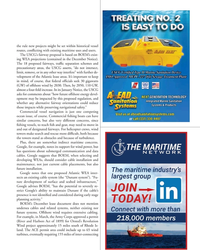 )
April 2024 - Marine News page: 23
)
April 2024 - Marine News page: 23the rule new projects might be set within historical vessel routes, con? icting with existing maritime uses and users. The USCG’s fairway proposal is based on BOEM’s exist- ing WEA projections (contained in the December Notice). The 18 proposed fairways, traf? c separation schemes and precautionary
-
 )
February 2024 - Maritime Reporter and Engineering News page: 22
)
February 2024 - Maritime Reporter and Engineering News page: 22R&D MATT HART Matt Hart, Manager & Platform Leader, Marine & Stationary Power Systems, Wabtec, offers insights on how the megatrends of decarbonization, energy transition and autonomy all inspire Image courtesy Wabtec and impact the marine power solutions from Wabtec. By Greg Trauthwein Matt, to start
-
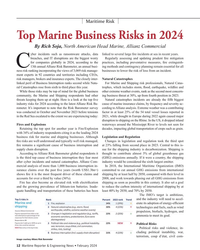 )
February 2024 - Maritime Reporter and Engineering News page: 12
)
February 2024 - Maritime Reporter and Engineering News page: 12Maritime Risk Top Marine Business Risks in 2024 By Rich Soja, North American Head Marine, Allianz Commercial yber incidents such as ransomware attacks, data linked to several large ? re incidents at sea in recent years. breaches, and IT disruptions are the biggest worry Regularly assessing and updating
-
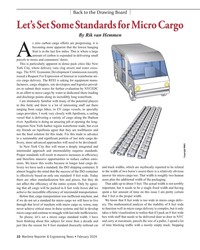 )
February 2024 - Maritime Reporter and Engineering News page: 10
)
February 2024 - Maritime Reporter and Engineering News page: 10Back to the Drawing Board Let’s Set Some Standards for Micro Cargo By Rik van Hemmen s zero carbon cargo efforts are progressing, it is becoming more apparent that the lowest hanging fruit is in the last few miles. This is where a large amount of carbon is expended in delivering small A parcels to
-
 )
February 2024 - Marine News page: 23
)
February 2024 - Marine News page: 23Passenger Vessel Safety occur on a sightseeing vessel or an Ohio River dinner cruise? This contrast between speci? c – sometimes very speci? c – and general comes to mind when considering the numerous safety advisories pertaining to recent amphibious DUKW boat tragedies or the 2019 Conception dive boat
-
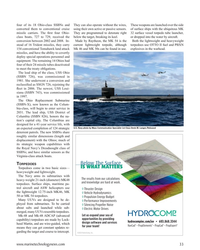 )
January 2024 - Marine Technology Reporter page: 33
)
January 2024 - Marine Technology Reporter page: 331997. The Ohio Replacement Submarine (SSBN-X), now known as the Colum- bia-class, will begin to enter service in 2031. The lead ship, USS District of Columbia (SSBN 826), honors the na- tion’s capital city. The Columbias are designed for a 41-year service life, with U.S. Navy photo by Mass Communication
-
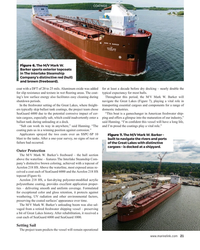 )
January 2024 - Maritime Reporter and Engineering News page: 21
)
January 2024 - Maritime Reporter and Engineering News page: 21COATINGS Figure 6. The M/V Mark W. Barker sports exterior topcoats in The Interlake Steamship Company’s distinctive red (hull) and brown (freeboard). coat with a DFT of 20 to 25 mils. Aluminum oxide was added for at least a decade before dry docking – nearly double the for slip resistance and texture
-
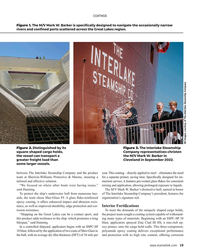 )
January 2024 - Maritime Reporter and Engineering News page: 19
)
January 2024 - Maritime Reporter and Engineering News page: 19COATINGS Figure 1. The M/V Mark W. Barker is speci? cally designed to navigate the occasionally narrow rivers and con? ned ports scattered across the Great Lakes region. All images courtesy of The Interlake Steamship Company Figure 2. Distinguished by its Figure 3. The Interlake Steamship square-shaped
-
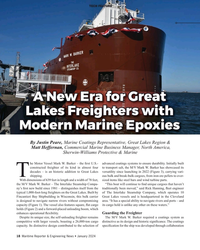 )
January 2024 - Maritime Reporter and Engineering News page: 18
)
January 2024 - Maritime Reporter and Engineering News page: 18TECH FEATURE A New Era for Great Lakes Freighters with Modern Marine Epoxies By Justin Peare, Marine Coatings Representative, Great Lakes Region & Matt Heffernan, Commercial Marine Business Manager, North America, Sherwin-Williams Protective & Marine he Motor Vessel Mark W. Barker – the ? rst U.S.
-
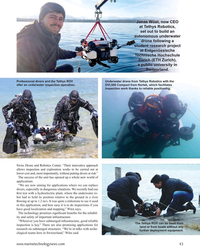 )
November 2023 - Marine Technology Reporter page: 43
)
November 2023 - Marine Technology Reporter page: 43Jonas Wüst, now CEO at Tethys Robotics, set out to build an autonomous underwater drone following a student research project at Eidgenössische Technische Hochschule Zürich (ETH Zurich), a public university in Switzerland. Professional divers and the Tethys ROV Underwater drone from Tethys
-
 )
November 2023 - Marine Technology Reporter page: 42
)
November 2023 - Marine Technology Reporter page: 42CASE STUDY ROV DVL TECH Tethys Robotics’ underwater drone in Lake Zurich during a harbor inspection. All image courtesy Nortek Tethys Robotic’s new ROV Leverages Nortek DVL Tech new Remotely Operated Vehicle (ROV) from Swit- pulse along a minimum of three acoustic beams, each pointing zerland’s Tethys
-
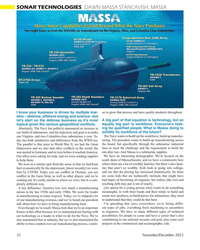 )
November 2023 - Marine Technology Reporter page: 32
)
November 2023 - Marine Technology Reporter page: 32announced an increase in solidify its workforce of the future? our build of submarines, and the trajectory and goal is to make one Virginia- and two Columbia-class submarines a year. To- The Navy wants to build up the workforce, build up manufac- day has both similarities and differences from the WWII era
-
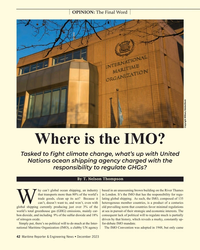 )
December 2023 - Maritime Reporter and Engineering News page: 42
)
December 2023 - Maritime Reporter and Engineering News page: 42OPINION: The Final Word Copyright William/AdobeStock Where is the IMO? Tasked to ? ght climate change, what’s up with United Nations ocean shipping agency charged with the responsibility to regulate GHGs? By T. Nelson Thompson hy can’t global ocean shipping, an industry based in an unassuming brown
-
 )
November 2023 - Marine News page: 29
)
November 2023 - Marine News page: 29Blue Sky Maritime Coalition “We need a sustainable maritime fuel.” – Jennifer States, VP and chief strategy of? cer, Blue Sky Maritime Coalition tugboat for a demonstration project along the Hudson River. Amogy’s am- monia powerpack—an ammonia fed fuel cell, mountable in a container or on a
-
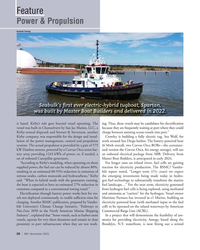 )
November 2023 - Marine News page: 28
)
November 2023 - Marine News page: 28Feature Power & Propulsion Seabulk Towing Seabulk’s ? rst ever electric-hybrid tugboat, Spartan, was built by Master Boat Builders and delivered in 2022. is based. Kirby’s role goes beyond vessel operating. The ing. Thus, these vessels may be candidates for electri? cation vessel was built in
-
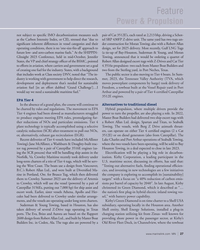 )
November 2023 - Marine News page: 27
)
November 2023 - Marine News page: 27Feature Power & Propulsion not subject to speci? c IMO decarbonization measures such pair of Cat 3512E’s, each rated at 2,213 bhp, driving a Schot- as the Carbon Intensity Index, or CII), stressed that “due to tel SRP 430FP Z-drive unit. The same yard has two tugs un- signi? cant inherent differences in
-
 )
November 2023 - Marine News page: 14
)
November 2023 - Marine News page: 14Insights model that we’re building now. For ports where you don’t that runs a ? eet of seven tugboats and a number of barges need 95 tons, that makes a lot of sense. We’re pretty bullish for salvage and other work on the river. on [the RAscal] model.” Not only do these segments help DMI ride out dips
-
 )
November 2023 - Marine News page: 13
)
November 2023 - Marine News page: 13the shipbuild- ing industry. The yard is situated in what Manning described as “an odd location for building boats”, nestled between a road and the Columbia River, with a relatively small amount of land to work with. “As far as I know, we’re the only shipyard in the country that actually assembles a boat
-
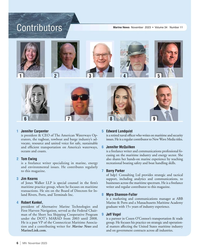 )
November 2023 - Marine News page: 6
)
November 2023 - Marine News page: 6Marine News November 2023 • Volume 34 Number 11 Contributors 1 24 35 7 6 8 9 1 Jennifer Carpenter 5 Edward Lundquist is president & CEO of The American Waterways Op- is a retired naval of? cer who writes on maritime and security erators, the tugboat, towboat and barge industry’s ad- issues.
-
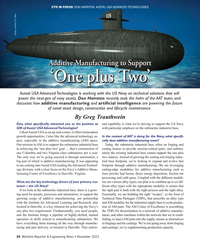 )
November 2023 - Maritime Reporter and Engineering News page: 24
)
November 2023 - Maritime Reporter and Engineering News page: 24relies on forging and in achieving the ‘one plus two’ goal … that’s construction of casting houses to provide mission-critical parts, and unfortu- one Columbia and two Virginia class submarines per a year. nately the existing industrial base cannot support the one plus The only way we’re going succeed is
-
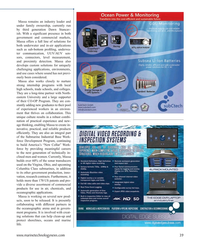 )
September 2023 - Marine Technology Reporter page: 39
)
September 2023 - Marine Technology Reporter page: 39generation of technically in- clined men and women. Currently, Massa builds over 60% of the sonar transducers used on the Virgina, Ohio, and upcoming Columbia Class submarines, in addition to its other government production, inno- vation, research contracts. Furthermore, it holds more than 170 US patents
-
 )
September 2023 - Marine Technology Reporter page: 29
)
September 2023 - Marine Technology Reporter page: 29, and conservation. Synchro can provide: • No-cost and streamlined access to select ocean observing platforms around Monterey Bay and British Columbia for emerging technology testing and evaluation • A technician to facilitate deployment of your equipment on demo platforms APPLY NOW • Evaluations
-
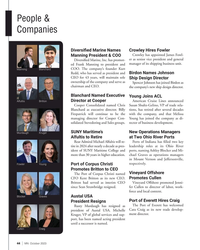 )
October 2023 - Marine News page: 44
)
October 2023 - Marine News page: 44People & Companies Diversi? ed Marine Names Crowley Hires Fowler Crowley has appointed James Fowl- Manning President & COO er as senior vice president and general Diversi? ed Marine, Inc. has promot- ed Frank Manning to president and manager of its shipping business unit. COO. The company’s founder
-
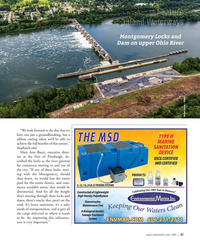 )
October 2023 - Marine News page: 31
)
October 2023 - Marine News page: 31Montgomery Locks and Dam on upper Ohio River Michel Sauret / USACE “We look forward to the day that we have not just a groundbreaking, but a ribbon cutting when we’ll be able to achieve the full bene? ts of this system,” Stephaich said. Mary Ann Bucci, executive direc- tor at the Port of Pittsburgh
